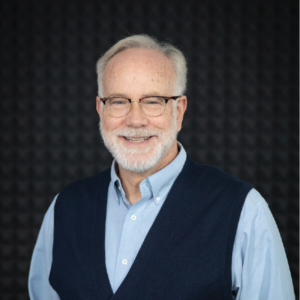Third Third in the News - November 2022 - The Changing Present and Future of Work for Older Adults
Transcript: Future of Work: Rethinking Age & Work
Washington Post, October 26, 2022
https://www.washingtonpost.com/washington-post-live/2022/10/26/transcript-future-work-rethinking-age-work/
This article is a transcript of recent conversations between Frances Stead Sellers of the Washington Post and two experts on the topic of age and work. Her first conversation with Jason Furman, Harvard economics professor and former chair of the Council of Economic Advisors. Her second conversation is with Laura Carstensen, professor of psychology at Stanford and the founding director of the Stanford Center on Longevity.
Here are several highlights from this rather lengthy but fascinating transcript:
STEAD SELLERS: So, Jason, my first question is about the aging workforce. Americans are living longer and working longer. What’s the economic impact of this trend?
FURMAN: Look, it’s actually been one of the things that’s worked well in the economy in the last couple decades. It used to be that as people aged, they worked less and less. Starting around the 1980s, that actually turned around, and we’ve had a steady increase in people working longer. Now, if they were working longer because they were desperate and had to and would starve otherwise, we’d be worried, but it doesn’t seem to be that.
SEVERAL COMMENTS FROM LAURA CARSTENSEN:
I actually think perceptions of aging have improved over the last 15 years, and a lot of that has to do with work. It has to do with engagement. When people are engaged and participating in workplaces, families, communities, the aging stereotypes are less likely to hold.
What we’re beginning to see is that people are working longer, and in part, that’s because of financial need. Another, about 50 percent of that, is because people like to work. They enjoy what they do. They get a sense of purpose from their work, and so we’re seeing people working longer now than we have in the past, and it’s less related to policy than it is to expectations about their own personal well‑being.
[W]e need to rethink how we live lives that may come close to being a century long and how that’s different from those lives we lived when life expectancy was 50, and that was only a century ago. So I think that’s one of the problems that we faced is that we’ve tended to just push all these extra years into the existing social norms and cultural practices. Instead, we have an opportunity to rethink that. So what I’d like to see us do is to work many more years and fewer days in the week and hours in the day, and I think we could improve quality of life.
The Future of Work Is a 60-Year Career
By Joe Pinsker, The Atlantic, December 14, 2021
https://www.theatlantic.com/family/archive/2021/12/future-work-shorter-hours-longer-careers/621003/
The article summary reads: “Humans may soon live to be 100, which likely means more years on the job. That could be a good thing, if we take the opportunity to redesign work.” It begins with quite a punch, quoting from a Stanford University study: “’In the United States, demographers predict that as many as half of today’s 5-year-olds can expect to live to the age of 100.’ But that was followed, several pages down, by a haunting prediction: ‘Over the course of 100-year lives, we can expect to work 60 years or more.’”
This article, like the Washington Post transcript, draws from the work of Laura Carstensen, director of Stanford’s Center on Longevity. Here are a couple of excerpts:
Carstensen proposes allowing workers to scale their hours up or down throughout their careers, based on their responsibilities outside of paid work. She imagines two parents being able to temporarily reduce their full-time jobs to 20 hours a week when caring for their young children, and then ratcheting their hours back up later on. Under this model, people would work the same amount overall as they do now, but make up for periods of reduced hours with periods of longer hours and/or by spreading work out over more years of their (longer) lives.
Retirement is another chapter of our working lives that we could rewrite. In its current incarnation, it is regarded as a time free of obligations, which leaves the shape of life a bit lopsided: “We’re overutilized in midlife and underutilized after 65,” Carstensen said. This imbalance will become only more pronounced as people don’t just live longer but stay healthier for longer as well. In this sense, the design flaw is that retirement is too rigid of a binary—you’re either working a lot or not at all.
Number of people 75 and older in the labor force is expected to grow 96.5 percent by 2030
By The Economics Daily, U.S. Bureau of Labor Statistics, November 4, 2021
https://www.bls.gov/opub/ted/2021/number-of-people-75-and-older-in-the-labor-force-is-expected-to-grow-96-5-percent-by-2030.htm
Here’s the main point: “The labor force is expected to increase by 8.9 million, or 5.5 percent, from 2020 to 2030. The labor force of people ages 16 to 24 is projected to shrink by 7.5 percent from 2020 to 2030. Among people age 75 years and older, the labor force is expected to grow by 96.5 percent over the next decade.” Plus, by the way, the group that is projected to grow second to the most is workers who are 55 to 74. This fits with a recent survey that found that a third of older adults seek to work well past retirement age, or won’t retire at all.

Mark D. Roberts
Senior Strategist
Dr. Mark D. Roberts is a Senior Strategist for Fuller’s Max De Pree Center for Leadership, where he focuses on the spiritual development and thriving of leaders. He is the principal writer of the daily devotional, Life for Leaders,...


